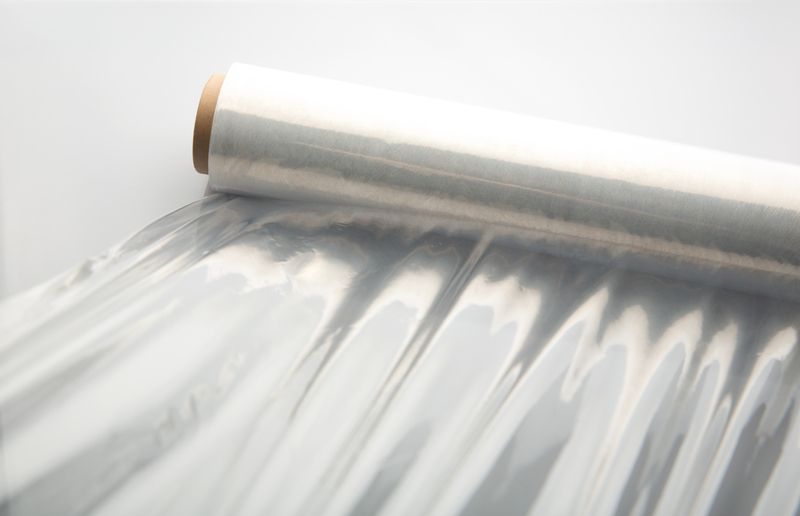Your Guide to Pristine Curtains
Posted on 28/09/2025
Your Guide to Pristine Curtains
Curtains do more than just dress your windows--they enhance home decor, ensure privacy, and can even help regulate indoor temperature. However, maintaining pristine curtains often feels daunting, and many homeowners overlook the care these stylish fabrics require. Whether you have delicate sheers, thick blackout drapes, or luxurious silk panels, this comprehensive guide will help you keep your window treatments clean, beautiful, and long-lasting.
Why Keeping Curtains Pristine Matters
Curtains are exposed to a range of pollutants daily, from dust and pet dander to cooking odors and pollen that sneaks in through open windows. Over time, neglected textiles can harbor allergens, lose their color, and detract from the overall appeal of your rooms. Regular cleaning and care not only keep your curtains looking immaculate but also contribute to healthier indoor air quality.
- Improved air quality by reducing dust and allergens
- Prolonged fabric life through routine maintenance
- Enhanced appearance--fresh, unwrinkled drapes elevate any room
- Investment protection by avoiding sun fading and fabric degradation

Understanding Different Curtain Fabrics
Before diving into cleaning techniques, it's essential to know your curtain fabric. Different textiles demand specific care to remain spotless and vibrant. Here's a quick overview:
Cotton Curtains
Cotton is popular for its softness and versatility. It's generally machine-washable, though some cotton drapes may shrink or wrinkle if not washed in cold water and dried gently.
Linen Curtains
Linen offers a sophisticated look but can be prone to wrinkles. These are best cleaned with gentle hand washing or dry cleaning, as over-agitation can cause irreversible creasing.
Silk Curtains
For luxury and elegance, silk is unmatched, but it's also delicate. Hand wash with care or opt for professional dry cleaning to avoid damage.
Polyester or Microfiber Curtains
These modern fabrics resist shrinking and wrinkling, making them among the easiest window coverings to clean at home. They're great for high-traffic areas or homes with children and pets.
Velvet Curtains
Plush and dramatic, velvet requires special attention. Use a vacuum with a soft brush attachment and always consult manufacturer guidelines--some velvets are dry-clean only.
The Best Practices for Curtain Cleaning
Curtain cleaning isn't one-size-fits-all. To keep your window treatments pristine, it's critical to follow best practices tailored to the fabric and your lifestyle.
1. Regular Dusting and Vacuuming
- Use a handheld vacuum or the upholstery attachment on your standard vacuum cleaner at least once a week.
- Start from the top and work downward to remove dust, pet hair, and dander.
- For sheer or fragile curtains, try a lint roller instead.
2. Spot Cleaning for Minor Stains
When accidents happen, quick action is key to pristine drapes. Blot--don't rub--spills immediately with a clean cloth. Use a diluted solution of gentle detergent and test on an inconspicuous area first. Avoid soaking the fabric, as moisture can cause water stains or weakening of the textile.
3. Washing Curtains: Machine, Hand, or Dry Clean?
- Check care labels: These provide crucial information on whether your curtains can be machine washed, should be hand washed, or must go to the dry cleaner.
- For machine-washable curtains, select a gentle cycle and mild detergent. Use cold water to prevent shrinking and fading.
- Hand washing delicate curtains ensures tissues remain intact. Soak in cold water with a mild detergent, gently swish, rinse, and squeeze (never wring) excess water.
- Dry cleaning is the safest method for silk, velvet, and heavily embroidered window coverings.
4. Proper Drying Techniques
- Air dry curtains by hanging them on a sturdy clothesline or shower rod. This prevents shrinkage and keeps pleats in shape.
- If using a dryer, select a low heat setting and promptly remove curtains to prevent wrinkling.
- Iron or steam on the reverse side for a crisp finish, especially for heavier fabrics.
5. Seasonal Deep Cleaning
Ideally, pursue a deep clean every six months to ensure your curtains remain in immaculate condition. For allergy sufferers, quarterly cleaning is even better.
Expert Tips for Maintaining Pristine Curtains
- Use curtain liners to shield decorative panels from sunlight and dust. Liners are easier to clean and can drastically extend curtain lifespan.
- Avoid direct sunlight where possible. Intense sun can cause fading, especially with natural fibers like cotton and silk.
- Rotate and reposition curtains to balance exposure and wear.
- Keep windows clean, minimizing the transfer of outdoor debris to fabrics.
- Invest in quality hardware that supports the weight of your curtains and prevents sagging.
Common Mistakes to Avoid
Want to keep your curtains spotless for years? Be wary of these common errors:
- Over-washing: Excessive laundering can wear out fabrics. Stick to a realistic cleaning schedule based on usage and location.
- Ignoring care instructions: Each textile is unique. Always follow the manufacturer's label to avoid accidental damage.
- Using harsh detergents: Bleach and strong chemicals can break down fibers and cause discoloration.
- Wringing fabric: This action can stretch, misshape, or weaken your curtain panels.
- Ironing at high heat: Hot irons may scorch or leave marks, especially on synthetics and specialty weaves.
Storage Solutions for Long-Lasting Curtains
Storing your curtains properly during renovations, seasons, or moves is essential for keeping them fresh and protected.
- Clean before storing to avoid pests and mildew.
- Fold carefully with acid-free tissue paper between folds to prevent deep creases.
- Store in a cool, dry, and dark place--away from direct sunlight and humidity.
- Use fabric storage bags instead of plastic to allow for air circulation and prevent yellowing.
The Benefits of Professional Curtain Cleaning
For particularly delicate, large, or valuable curtain sets, consider professional cleaning services. Professionals use specialized equipment and tailored methods that:
- Remove dirt and odor without risking fabric damage
- Restore vibrancy to faded or yellowed curtains
- Ensure deep cleaning of pleats, trims, linings, and hardware
- Handle difficult stains safely
Eco-Friendly Curtain Cleaning Techniques
If you're passionate about sustainability, keeping your curtains beautiful doesn't mean harming the planet. Here's how to opt for green curtain care:
- Choose mild, biodegradable detergents free of harsh chemicals.
- Air dry curtains instead of machine drying to save energy.
- Spot clean stains using solutions like white vinegar or baking soda when appropriate.
- Vacuum regularly instead of frequent washing.
How Interior Design Relates to Curtain Cleanliness
- Pristine curtains draw attention to your chosen style--whether that's modern minimalism or bohemian flair.
- Faded, dusty, or wrinkled window treatments can undermine the overall look of your office, lounge, or bedroom.
- Color selection matters: Lighter fabrics may show more stains but brighten up a space, while darker hues hide dust and aging but can fade faster.

Top FAQs: Keeping Curtains Immaculate
How often should I clean my curtains?
Aim for a light dust or vacuum every 1-2 weeks, and a full wash or professional clean every 6 months. Homes with allergies or pets may benefit from more frequent attention.
Can I put my curtains in the washing machine?
Most cotton, polyester, and microfiber curtains are safe for machines when washed on a gentle cycle with mild detergent. Always check the care label for instructions specific to your fabric.
What's the best way to remove wrinkles without ironing?
Hang freshly washed curtains while still damp--they'll typically dry smooth under their own weight. For stubborn wrinkles, a garment steamer is an effective, low-risk solution.
How can I keep my curtains from fading?
Install curtain liners, use blinds or shades behind them, and, if possible, avoid prolonged direct sunlight exposure. Rotate curtains regularly to ensure even fading where unavoidable.
Are blackout curtains harder to keep clean?
While often heavier, blackout curtain fabrics are manufactured for durability. They collect dust like any curtain but are generally easy to vacuum or spot clean and don't usually require frequent washing.
Summary: A Commitment to Pristine Curtains
Investing time in proper care and maintenance keeps your curtains pristine, enhances your home's aesthetic, and protects your health. Whether you're tending to sheer panels or luxurious drapes, adapt your approach to the fabric, environment, and your household needs.
- Prioritize regular dusting to minimize allergic triggers and maintain vibrancy.
- Follow correct cleaning methods for your curtain's fabric.
- Store carefully during the off-season, and consider professional cleaning services for delicate or large window treatments.
With a little effort and the right routine, you can ensure your curtains remain clean, spotless, and beautiful--the crowning touch to your interior spaces!



